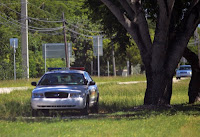I recently returned from the
International Trombone Festival in Austin, Texas.
During the masterclass sessions, I didn't take notes but still have some reflections worth sharing.
#1 Ian Bousfield and "Terroir"
Ian Bousfield, an Englishmen who is currently the principle trombonist of the Vienna Philharmonic gave two great masterclasses on consecutive days. During this time, he introduced the idea of terroir - a French term related to wine-making. Specifically, it means that one region (with its specific soil conditions, weather, sunlight, etc) will lend a sense of uniqueness to the wines produced there. More loosely, it can mean "a sense of place."
Ian's point, if I understood it correctly, is this: if you grow up in a region and are immersed in its culture, you have a more innate understanding of music from that region. Case in point: people who grow up in Vienna, immersed in the local musical culture, will have a deeper appreciation for Mahler. Unlike most Americans, they are in a better position to hear Mahler's music in the context of its roots and thus are better able to interpret it. In answering a question, he even went so far as to say that he preferred to avoid those concerts in which Vienna played music not from their own terroir - say, French music for example.
What impressed me was his description of the prevalence of 'art music' in common culture. Whereas, in the United States, orchestras are fighting to hold on to dwindling audiences, in Vienna [as he observed] it is not uncommon for children to receive tickets to an upcoming opera production. He pointed out that the Vienna State Opera performs almost daily to sold-out houses. Don't believe me? Check out their
schedule.
He told a great story about a farmer passing by his house on a tractor. [remember I'm paraphrasing here] The farmer stopped and asked, "You're with the Philharmonic aren't you? The 'Giovanni' was sh*t!"
Point taken: how often in our country would a person on the street even know what opera was being performed much less have seen it and have an opinion?
I have a relative in Paris whom we visit on occasion. I do remember how many little central town intersections had electronic kiosks with a schedule of local cultural events.
All this makes me think about Jeremy Wilson. If I remember correctly, at an ETW a few years back Jeremy won both the jazz and classical solo competitions (I was one of the judges on the classical competition). What does that mean? Well, a lot of talent, obviously. But also .... GOOD EARS.
In preparation for the Vienna audition, I believe Jeremy really focused on internalizing the style of that ensemble. I'm guessing those great ears that he developed, partly through jazz playing, helped him to be flexible in adapting to a different musical style. You might even say "adopting" that style.
So let me go with a crazy idea here: musically, if the audience can't hear it, it doesn't exist. Whatever advantage 'terroir' provides, it is only relevant in audible musical choices.
No, Jeremy Wilson (or Bousfield for that matter) didn't have the Viennese "terroir" working for him but he had great ears and musical flexibility. In the end, what came out of the bell, even though it was more 'studied' than 'native' apparently was good enough to win the audition.
So, as you practice those excerpts, ask yourself...
What style am I using?
Do I articulate notes differently for Berlioz and Bruckner?
..or..
Am I just being a dumb trombone jock pounding everything out with basically the same sound and style.
I am hopeful that, the higher the level of audition, the more this matters.

























